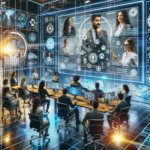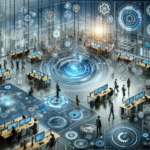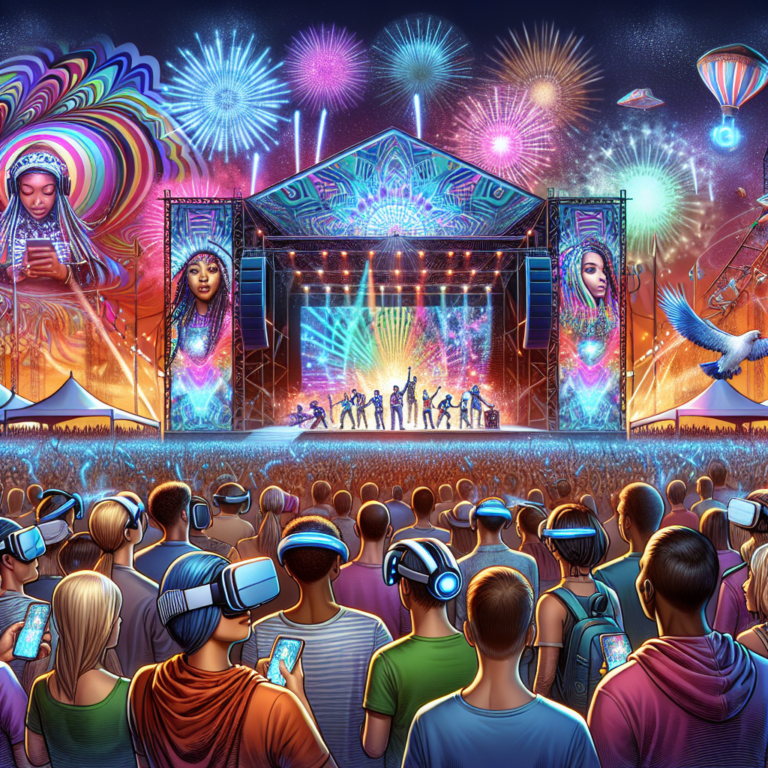Experience the Future: How Immersive Technologies Are Revolutionizing Live Events and Festivals 🎉
Introduction to Immersive Technologies in Live Events
As we dive deeper into the 21st century, the fusion of technology and creativity continues to reshape our world. One of the most exciting frontiers of this evolution is the use of immersive technologies in live events and festivals. From vibrant music festivals to captivating theatrical productions, technologies such as Virtual Reality (VR), Augmented Reality (AR), and Mixed Reality (MR) are enabling event organizers to craft unforgettable experiences. This blog post explores how these technologies enhance engagement, accessibility, and creativity in live events.
What Are Immersive Technologies?
Immersive technologies refer to a suite of digital tools that create interactive and engaging environments for participants. These technologies can transport guests to new worlds or enhance their existing surroundings, thereby enriching the overall experience. Here’s a quick rundown of the primary immersive technologies making waves:
- Virtual Reality (VR): Fully immerses users in a computer-generated environment, making them feel like they are “inside” the experience.
- Augmented Reality (AR): Overlays digital information onto the real world, enhancing participants’ perceptions without fully immersing them.
- Mixed Reality (MR): Combines elements of both VR and AR to create a hybrid experience where digital and physical objects co-exist and interact in real-time.
The Impact of Immersive Technologies on Live Events
With the rise of immersive technologies, live events have transcended traditional boundaries, creating multi-dimensional experiences that resonate long after the event concludes. Here are some ways these technologies are making a significant impact:
1. Enhanced Audience Engagement
Audience engagement is pivotal for any live event. Immersive technologies allow attendees to engage with the content on a deeper level. For instance:
- VR Experiences: Imagine a music festival where fans can wear VR headsets to watch a 360-degree performance from any angle, feeling like they are on stage with their favorite artists.
- Interactive Installations: Art exhibits featuring AR can transform static pieces into interactive experiences, allowing visitors to learn about the artist and the artwork as they engage with it in real-time.
2. Greater Accessibility for All
In an era focused on inclusivity, immersive technologies can break down barriers that may prevent some individuals from attending live events. Some key aspects include:
- Virtual Attendance: For those unable to travel, VR can facilitate virtual attendance at concerts and festivals, making it possible to enjoy the event from the comfort of their homes.
- Accessibility Features: AR can provide translated subtitles or audio descriptions for the visually impaired, enabling a richer experience.
3. Elevating Creativity and Artistic Expression
Immersive technologies offer artists and organizers innovative tools for expressing creativity. This leads to awe-inspiring performances and unique festival experiences, such as:
- Projection Mapping: Stunning visual displays projected onto buildings or stages create a mesmerizing ambiance, captivating festival-goers.
- Gamification: Event organizers can incorporate game-like experiences into festivals, encouraging participation and interaction through challenges that leverage AR technology.
Case Studies: Successful Integration of Immersive Technologies
Let’s take a look at some groundbreaking examples of how immersive technologies have successfully transformed live events and festivals:
1. Coachella’s AR Experience
In one of the world’s most famous music festivals, Coachella introduced an AR app that allowed attendees to enhance their festival experience. Users could scan QR codes throughout the venue to reveal exclusive content, such as artist interviews, behind-the-scenes videos, and 3D holograms of performers, all adding a layer of interactivity. This initiative not only engaged attendees but also created a buzz on social media, enhancing the festival’s visibility.
2. The Lion King: An Interactive Theatrical Experience
The Broadway musical “The Lion King” utilized VR technology to transport audience members to the African savanna. By wearing VR headsets during key moments, attendees could feel as though they were part of the story. This innovative approach allows the production to redefine traditional theatre, offering a more immersive storytelling experience.
3. Lollapalooza’s Virtual Festival
During the pandemic, Lollapalooza reinvented itself by hosting a completely virtual music festival using immersive technologies. Fans could navigate a 3D world, interact with other attendees, and enjoy live performances from the comfort of their homes. This adaptation not only kept the festival spirit alive but also allowed for a global audience, demonstrating that immersive technologies could reach far beyond physical limitations.
Challenges and Future Trends in Immersive Technologies for Live Events
While the impact of immersive technologies is undeniably profound, they do come with their challenges. Understanding these complexities can enable event organizers to leverage them more effectively:
1. Technological Barriers
Not everyone has access to advanced devices needed for VR or MR experiences. To counteract this, event organizers must find ways to make these technologies more accessible, perhaps through rentals or partnerships with tech companies.
2. Cost Implications
Implementing immersive technologies can be costly. However, the potential return on investment through enhanced audience experiences and increased attendance can outweigh initial expenses. Organizers must weigh the pros and cons carefully and look for sponsorship opportunities.
3. Evolving Trends
As the tech landscape quickly evolves, staying ahead of trends is essential. The development of new apps, wearables, and interactive experiences will continuously shape how festivals and events engage their audiences. Keeping an eye on emerging technologies will allow organizers to innovate and enhance their offerings continually.
Final Thoughts
Immersive technologies are not just a trend; they represent the future of live events and festivals. By providing deeper audience engagement, greater accessibility, and limitless creative possibilities, these technologies enhance every aspect of the experience. As we look forward to the future, it’s clear that the best is yet to come for live events, thanks to the advancements in immersive technologies. Let’s get ready to experience the extraordinary! 🚀




0 Comments